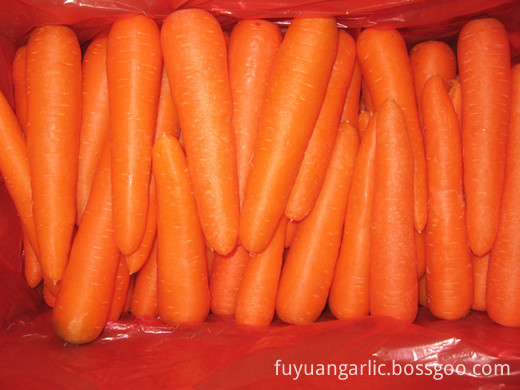1. Mechanized corn stalk return technology After the corn in straw is used to return cropland to the crop, it can improve soil physical and chemical properties, increase soil organic matter content, and fertility. It was determined that soils containing straw returned to the field for 2 to 3 years could increase soil organic matter content by 0.06% to 0.10%, increase available potassium content by 25% to 30%, and increase nitrogen content by 1.06% to 1.15%. The ability of the soil to resist drought has been significantly increased, and wheat yield increases range from 5% to 12%. Second, the mechanical deep plowing technology The small and medium-sized tractors carry out farmland operations, and the plowing depth can only reach 15 to 20 centimeters, and the use of small tractors for many years to cultivate the land is easy to form the plow bottom layer. Therefore, a deep plowing (greater than 25 cm in depth) must be performed in wheat field every 2 to 3 years. Deep plowing can increase the thickness of living soil, facilitate the extension of roots, expand the scope of crops to absorb nutrients, make compact soil layers become loose, soil capacity becomes smaller, porosity increases, and the activity of aerobic microorganisms in soil is promoted, and air and water are promoted. Get a reasonable adjustment. Deep plowing can also reduce surface runoff, reduce the occurrence of pests and diseases, enhance the soil's water storage and fertility capacity, and drought resistance, and promote the formation of aggregate structure. Tests have shown that tillage can increase soil moisture by 4% to 6% and increase grain yield by 7.8% to 19.5% over livestock. Third, formula fertilization technology Under normal circumstances, the proportion of nitrogen fertilizer, phosphate fertilizer, and potassium fertilizer in wheat formula fertilizer is 1:0.6:0.25, 4000 ~ 5000 kg of soil miscellaneous fertilizer can be applied per acre, 50 ~ 70 kg of standard nitrogen fertilizer, and 40 ~ 50 kg of phosphate fertilizer. Potash 10 to 15 kg. 4. Fertilizer Seed soaking techniques Suitable fertilizers for water soaking include 1% urea or ammonium sulfate or ternary compound fertilizer, 0.1% diammonium phosphate and 3% superphosphate. Soaking time should not exceed 12 hours in general to prevent slurry seeding. In case of insufficient soil moisture, no irrigation conditions or no rainfall in the short term, it is not possible to soak seeds with fertilizers, otherwise sprouting or dead seedlings will occur. Fifth, the east-west line planting technology Wheat is planted in the east-west direction. Generally, it increases production by 5% to 10% compared with the north-south line. This is mainly because the distribution of the root system is affected by the Earth's magnetic field and it tends to be “soaring southâ€. Sixth, wide and narrow row sowing technology High-yielding fields of wheat to implement wide and narrow line sowing ratio of sowing can increase production by 10% to 16.4%. The implementation of wide and narrow rows of planting not only facilitates ventilation and light transmission, exerts marginal effects, facilitates management, reduces pests and diseases, but also increases the use of gas fertilizers (CO2) for crops, while increasing CO2 is a major measure for high yields. Seven, fine seeding techniques using mechanical sowing, sowing rate per acre of 7 to 10 kg, can increase 5% to 10%. VIII. Seed Magnetization Technique Wheat seeds that have been magnetized by a magnetizer have the advantages of high germination rate, rapid emergence, well-developed root system, high effective tillering rate, large plant size, lodging resistance, resistance to diseases, and strong drought resistance. According to experiments, seed magnetization technology can increase the average yield of wheat by 10% to 12%. 9. Irrigation and calcium addition technology Irrigation and calcium addition technology in wheat is to incorporate a certain amount of calcium (such as calcium chloride) in wheat irrigation to achieve the purpose of increasing production. This technology is suitable for plots with low calcium content and insufficient organic fertilizer.
The best time to sow carrots is between small and hot, but in recent years, carrots have also appeared in spring because of market demand. Spring sowing earlier, generally in late February to early March! Carrot is a semi-cold vegetable, the suitable germination temperature is 20-25 degrees Celsius, the suitable growth temperature is 18-23 degrees Celsius, the night temperature is 13-18 degrees Celsius, the temperature is too high, too low is unfavorable to the growth, carrot roots are well developed, therefore, Deep-turning land plays an important role in promoting root growth and fleshy root hypertrophy.We also supplied Fresh Ginger ,Air Dried Ginger , Fresh Garlic , White Garlic ,red garlic. Sweet Corn , Fresh Taro , Fresh Baby Mandarin, Fresh Red Grape, Fresh Pomelo , Fresh Ya Pear Chaotian Chili , Paprika Powder , Fresh Apple and so on.
Fresh Carrot L 200-250G,Healthy Fresh Carrot,Natural Fresh Carrot,Fresh Juicer Carrot Jining Fuyuan Fruits And Vegetables Co., Ltd. , https://www.fuyuanfv.com

Nine wheat production increase measures
